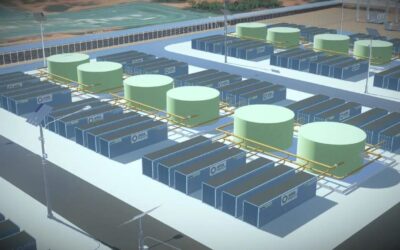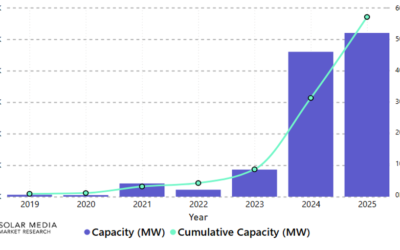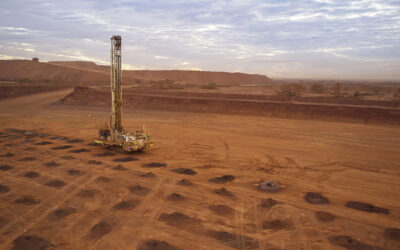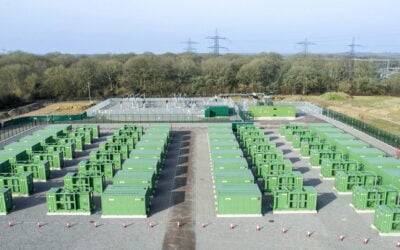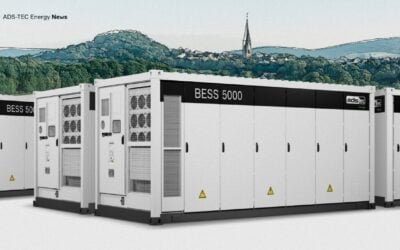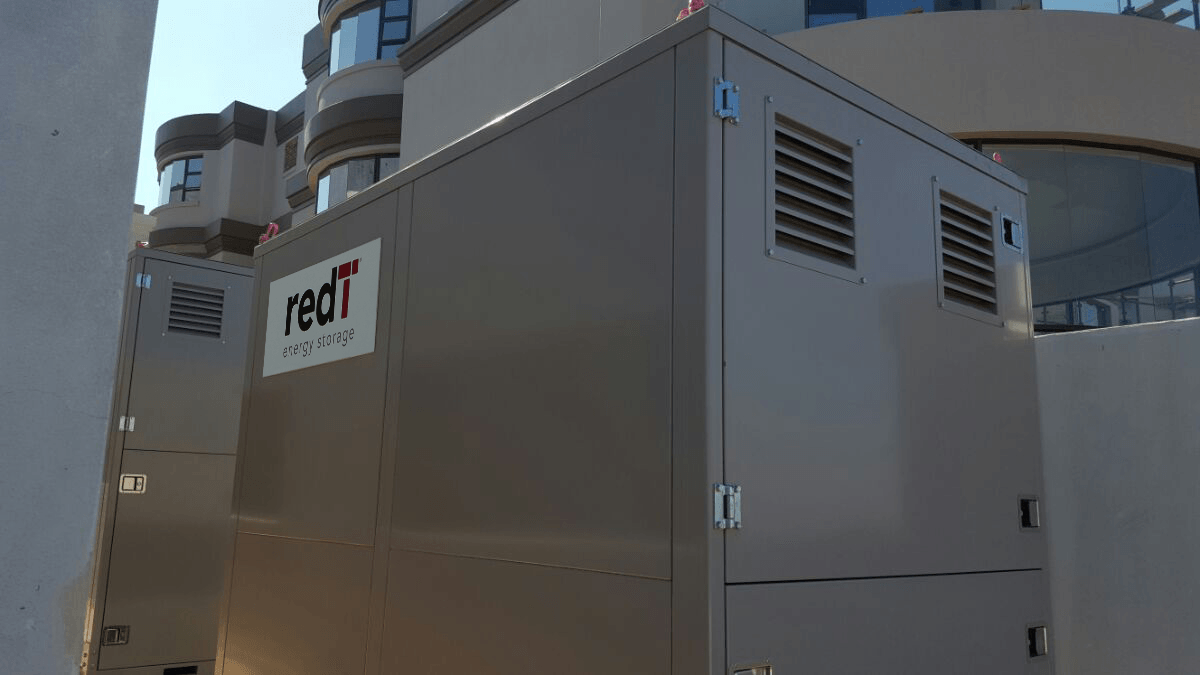
Long duration energy storage will be put to use in Germany’s grid, with RedT, a UK-headquartered maker of flow energy storage ‘machines’, announcing an initial 80MWh deployment to the country.
Through a two-phase deal brokered with developer Energy System Management – a subsidiary of WWF Solar – RedT will deliver 1,066 of its Gen 3 tank units to form two 40MWh grid-scale projects in the first phase. The second phase is a much bigger deal, comprising a further 690MWh of projects.
The battery storage systems, based on vanadium redox flow technology in which energy is stored as liquid electrolyte in tanks, will provide Secondary Control Reserve (SCR), aka Automated Frequency Response Reserve, to the grids of Austria and Germany. Unlike the better-known Primary Control Reserve, which is fast-acting frequency response delivered within minutes or less of receiving a signal from the grid and essentially provides short bursts of power, SCR requires four hours minimum energy capacities and longer periods of energy delivery.
In Germany, the market for energy storage systems to provide grid services is more mature than many others, RedT CEO Scott McGregor told Energy-Storage.news today, referencing some 8GWh of SCR capacity already online, for which he said “there are very good revenue streams,” for providing the service.
Try Premium for just $1
- Full premium access for the first month at only $1
- Converts to an annual rate after 30 days unless cancelled
- Cancel anytime during the trial period
Premium Benefits
- Expert industry analysis and interviews
- Digital access to PV Tech Power journal
- Exclusive event discounts
Or get the full Premium subscription right away
Or continue reading this article for free
In many other early stage grid storage markets such as the UK and Australia, the majority of large battery systems are intended to provide just a few minutes of energy storage to balance control voltage. Systems providing SCR are paid for the available power and energy they can discharge onto the grid – or draw from the grid to charge.
“It’s not really storing renewables on the grid,” McGregor said of the shorter frequency response projects of the UK and Australia, whereas “the secondary market in Germany is a full blown four hour market so it will use the full four hours of the system.”
‘This is where the future of energy storage is’
According to McGregor, vanadium redox flow energy storage could be a better fit for this type of application, due to its rugged ability to store large amounts of energy and perform full charge and discharge cycles without degradation.
“To do that all day long with lithium – it wouldn’t survive the degradation, so this is where the future of energy storage is, providing big, long duration grid services. It’s not the type of service lithium would do.”
SCR procurement, a market established in 2016/2017, will also change from this month, incentivising longer duration storage by switching market design from weekly one-hour deliver periods to four hours procurement on a daily basis.
Financial close has not yet been reached for the projects, RedT said in an announcement this morning. However, CEO Scott McGregor told Energy-Storage.news this afternoon that RedT’s business model development, offering a clear path to returns, and its role in financing the projects, was behind WWF Solar’s selection of the company as its technology provider.
In terms of that financing, McGregor said it was about modelling the projects’ development as “energy storage infrastructure”, which the CEO said is “what energy storage should be for, not short term arbitrage opportunities”.
“We’re building our models around infrastructure players, which is debt finance that goes into infrastructure. Debt finance doesn’t go into short-term gambling. Financiers like this [model] because they want to deploy large, not small amounts of capital so it fits all parties.”
Once financial close has been reached, the projects could begin construction in 2019. McGregor said that on top of the SCR delivery, when possible extra revenues will be netted from energy trading from the machines according to available market opportunities. This should provide an attractive upside for the customer, McGregor said.
Meanwhile a RedT spokesman confirmed that the 690MWh pipeline to follow the first 80MWh phase is also confirmed. The company was profiled and Scott McGregor interviewed for PV Tech Power’s recent feature article on redox flow energy storage (part two of that piece, for which we also spoke to rivals VRB/Pu Neng, ESS Inc and Primus Power, will run in Volume 16 of the journal in early September).
Recent flow energy storage projects reported on by Energy-Storage.news include both trial and commercially-deployed systems on a smaller scale than RedT’s latest announcement. The largest grid-scale flow energy storage systems in development at the moment are several huge projects in China announced as part of the country’s fist unified strategy policy on energy storage.
Scott McGregor was also a participant in Energy-Storage.news’ recent video round table discussion taped at Intersolar Europe – talking about education, decarbonisation and real-world applications of energy storage and the factors influencing the scale-up of the future market.

